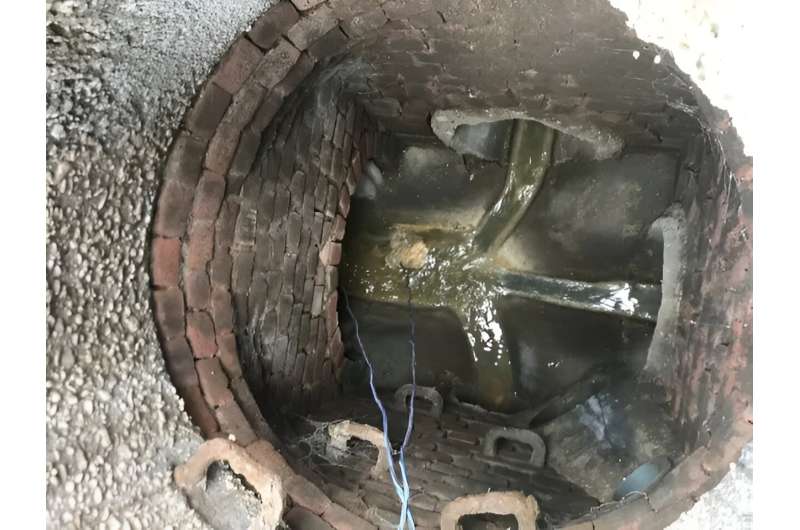This article has been reviewed according to Science X's editorial process and policies. Editors have highlighted the following attributes while ensuring the content's credibility:
fact-checked
trusted source
proofread
New model uses fewer measurements to determine level of pharmaceutical residues in wastewater

It is becoming increasingly obvious that pharmaceutical residues in wastewater are damaging to the environment, making it imperative that wastewater is tested for such residues. However, wastewater measurements are expensive and time-consuming.
A new model developed by Radboud University-affiliated environmental scientist Caterina Zillien can be used to determine the amount of pharmaceutical residues in wastewater—and their exact origin—every bit as precisely as actual measurements. Zillien will defend her Ph.D. thesis on this research project on 28th June 2024.
Many pharmaceutical residues are released into our wastewater (and hence the environment) mainly through our toilets. It has been known for some time that the release of pharmaceutical residues into rivers is not very good for fish. For instance, the residues have been known to cause fish to behave differently, or give them both male and female sexual characteristics.
To determine the quantity of medicine that ends up in our rivers, measurements are performed regularly, and they are quite expensive.
As an alternative to said measurements, environmental scientist Caterina Zillien developed a model that calculates the amount of pharmaceutical residues that ends up at wastewater treatment plants on the basis of medication prescription records.
"For instance, here in Nijmegen, we know the quantities of medications administered in hospitals, prescribed by doctors and what is sold to customers by chemists," says Zillien. Using data regarding 29 types of medications, such as paracetamol and beta blockers, Zillien developed a model allowing her to calculate the amount of pharmaceutical residues in wastewater.
Dipping sponges into sewers
In order to test the accuracy of her model, Zillien went underground. She opened manholes in Nijmegen and dipped small sponges into the wastewater in several different places. "I had a lot of fun doing that," says Zillien. "But I did have a bit of a shock the first time I removed such a sponge from the sewer."
The sponges were analyzed for residues by TNO. The environmental scientist then compared TNO's results with the results predicted by her model, and the model was found to be quite accurate.
"The great thing about this model is that it gives you a better understanding of where exactly the pharmaceutical residues are originating from, which naturally makes it a lot easier to implement measures in a targeted manner." For instance, her research showed that radiographic contrast agents make up approximately 20% of the overall quantity of the 29 medications tested for in the wastewater.
"Those agents are mainly used in hospitals," says Zillien. "Radboud university medical center has sought to reduce its environmental impact for a while now, and these results have caused them to consider installing different toilets at the Cardiology unit, which will filter out a lot of these agents. So, that's a good example."
Other pharmaceutical residues
Once we have more usage data, this model could also be used for more types of pharmaceutical residues, and in other cities. "Unfortunately, we don't know at present how significant the problem of pharmaceutical residues in the environment really is, since we are not 100% sure how some of these substances affect aquatic organisms," the environmental scientist explains.
"Furthermore, there are obviously also a lot of other chemicals in the water for which we don't have any usage data at present. This will require a considerable amount of further research."
Provided by Radboud University




















